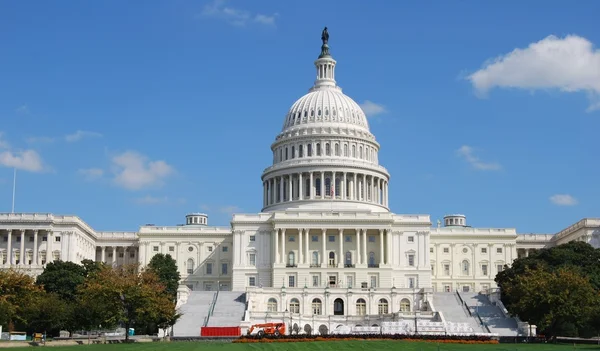Federal funding impacts how the federal government can support different priorities and, importantly, the ability of federal policymakers to make policy changes that support state leaders working to improve data use. This guest blog post is from Reg Leichty, founder and partner of Foresight Law + Policy, and Lindsay Fryer, president and founding principal at Lodestone DC. With many years of Capitol Hill experience between them, Reg and Lindsay put the recent debt limit agreement into context, sharing what it means for education and workforce data efforts.
For most of 2023, lawmakers struggled to reach an agreement on whether and how to raise the federal government’s statutory borrowing authority, often referred to as the debt ceiling or debt limit. Many economists warned that failure to raise the debt limit would have severe, negative consequences for the national and global economy.
After weeks of intense negotiations, House Republicans, led by Speaker Kevin McCarthy (R-CA), and President Biden announced that they had reached an agreement on this critically important issue. The agreement, dubbed the Fiscal Responsibility Act of 2023 (FRA), will suspend the debt ceiling for the next two years, allowing the federal government to keep borrowing money through early 2025. This timing is intentional and intended to remove the issue from the federal agenda until after the 2024 presidential election. While Democrats had previously sought a “clean” debt limit measure—one without additional policies attached—leaders ultimately included several significant changes to federal policy and spending that may have implications for the education and workforce development community in the years ahead.
What’s in the Deal?
Broadly the FRA includes the following elements in exchange for suspending the debt limit for the next two years:
- Nondefense Discretionary Spending Caps: The debt limit agreement establishes spending caps on discretionary spending for domestic programs, like education and workforce development, for FY24 and FY25. These caps roughly freeze current (FY23) funding levels for FY24 and allow a 1% increase in funding in FY25.
- Incentives for Regular Order: The FRA includes a provision that strongly encourages Congress to enact all 12 appropriations bills, which compose the entire annual federal budget, by January 1st of next year. Should lawmakers fail to achieve this, a 1% across-the-board spending reduction (known as a sequester) would be applied to all federal funding, including defense spending, until an agreement on full-year funding is reached.
- Spending Rescissions: The debt limit agreement takes back approximately $28 billion in unspent pandemic aid funding. This amount includes nearly $400 million in unobligated Education Stabilization Fund dollars. Recently, however, the US Department of Education (ED) has clarified that these funds will only include resources that federal officials have not yet sent to states and other eligible grantees, including a small amount of funding provided to the Institute of Education Sciences (IES) in the American Rescue Plan “to carry out research related to addressing learning loss caused by the coronavirus… and to disseminate such findings.” Additionally, the FRA rescinds about $1 billion intended to modernize state Unemployment Insurance (UI) systems. Both of these areas impact the funds that states have to devote to improving their data systems.
- Work Requirements: The FRA makes several changes to work requirements as they relate to the Supplemental Nutrition Assistance Program (SNAP) and the Temporary Assistance for Needy Families (TANF) programs. These changes are likely to increase the need for strengthened and modernized state data systems that are capable of determining individual eligibility and the impacts that these changes are likely to have over time.
Implications for Data Systems and Research
The rescission of IES funds intended for research on the impact of COVID-19 is an important issue to watch, as there will continue to be much to learn for years to come about the best ways to help students recover lost instructional time and related learning. ED should focus on minimizing any negative effects on this research and efforts to build evidence about how to get students back on track. Additionally, the $1 billion intended to modernize state UI systems could have helped improve program access and integrity, increase efficiencies, and better connect to statewide longitudinal data systems (SLDSs) in the future—a goal that DQC discusses in its recently-released vision.
Next Steps
Congress is now resuming work on the FY24 appropriations process, which must be addressed by October 1. With the new spending caps enacted by the FRA, appropriators have greater clarity about how to move forward with individual spending bills, including measures that fund education and workforce development. However, since these caps are intended to constrain federal spending for the next two years, it will be much more difficult to secure increased investments for critical initiatives like strengthened and modernized SLDSs.
As spending negotiations unfold, DQC and our partners will continue to engage with Congress and other policymakers to ensure that state data systems are prioritized.


